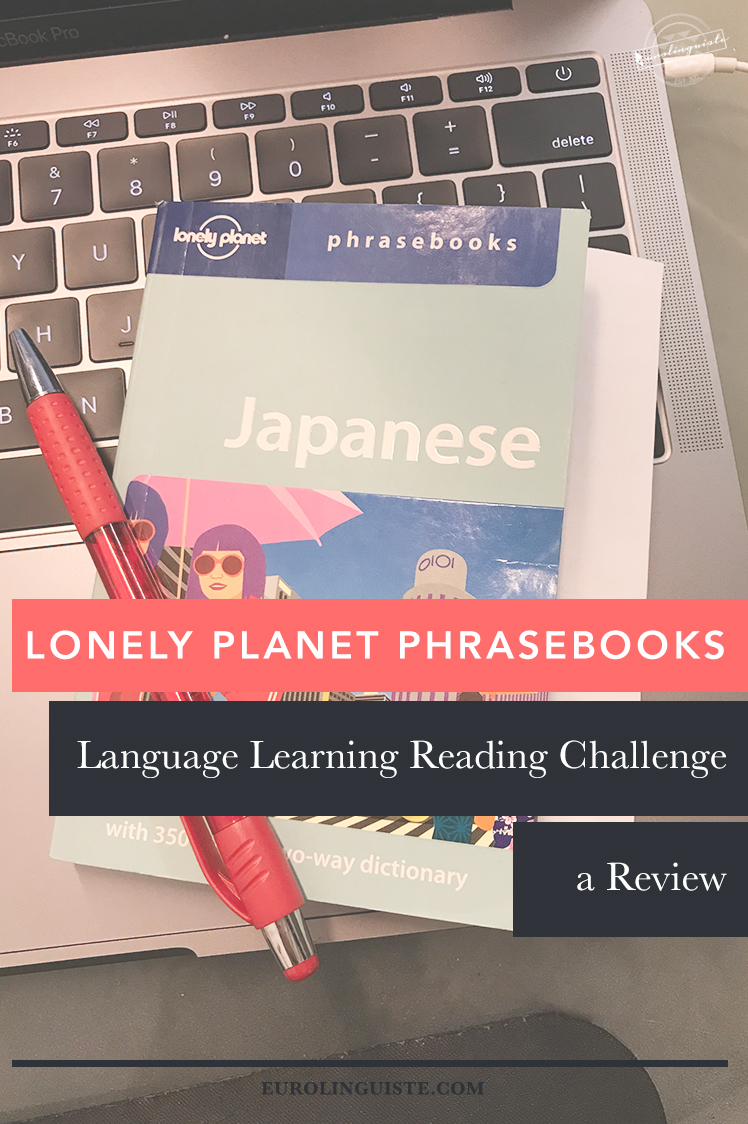A Review of the Lonely Planet Phrasebooks | Language Learning Reading Challenge

My name is Shannon Kennedy and I'm the language lover,…
Last month, the Language Reading Challenge theme was to read an introduction to your target language.
Those who were at an intermediate or advanced level could find an article or chapter in their coursebook that explained something that they were struggling with in particular.
Because my focus language, at the moment, is a language that’s new to me, I was able to read an introduction. The language? Japanese.
I chose to work through my Lonely Planet Phrasebook. In part, this was because it was an introduction to the language I already owned (and I believe in fully utilizing what you have before investing in new resources) and also because the series ranks at the top of my list of favorite phrasebooks.
Inside the Lonely Planet Phrasebook
Depending on the language you’re learning, Lonely Planet will include a few different elements. The broader categories, however, are pretty consistent.
The phrasebooks are typically broken down into the following categories:
* Tools (pronunciation, numbers, time, money, and challenges in the language)
* Practical (transportation, accommodation, shopping, etc.)
* Social (meeting people, interests, etc.)
* Food (eating out, special requirements, etc.)
* Safe Travel (health, emergency situations)
* Sustainable Travel (respect, cycling, giving back)
* Short dictionary (both Japanese-English and English-Japanese)
My Thoughts Using the Lonely Planet Phrasebook
The phrasebook includes a lot of information considering its size. It introduces basic grammar, a number of useful phrases, and interesting tidbits about Japanese culture.
I find the pocket-size extremely practical (they’re convenient to carry around) and even if your ultimate goal isn’t to travel, there are still many useful phrases for language learners.
What I love most, however, is the amount of vocabulary included. For its size, it’s impressive.
Some of the Things I Learned About Japan and the Japanese Language
While working through my phrasebook, I learned quite a few interesting things about both the Japanese language and Japan. Here are a few that stood out to me in particular:
1. There is a sitting position reserved for formal occasions called seiza 正座.
The phrase literally translates to “straight sitting” or “proper sitting”. When sitting this way, your legs are tucked directly beneath you and your back is straight.
2. Sensei and san aren’t the only suffixes used.
I had an inkling that there were more than just these two, but it was nice knowing more about the different suffixes. These include –sama, –chan, –kun, –bo, and –senpai.
3. Traditional performance arts beyond kabuki.
There’s also bunraku, Japan’s traditional puppet theater; buto, a modern dance form; kyogen, comic vignettes; no, a classical dance drama; manzai, another comic art; as well as rakugo, a comic monologue.
4. When you see -ya 屋 after a food, it means the restaurant specializes in it.
This means if the dish is written shabushabuya, then the restaurants specialize in shabu shabu. If it’s sushiya, then they are known for their sushi.
5. Eating while walking is considered rude.
And you won’t often see people doing it on the streets of Japan. Plus, doing this means that after finishing your food, you’ll have to carry your trash with you. There are very few public trash cans in Japan.
To Sum Up My Thoughts About Lonely Planet Phrasebooks
When you’re starting out a with a language, the Lonely Planet phrasebook is a great introduction. You can pick and choose the vocabulary you find relevant (remember – you don’t have to know everything, just hang on to what you need!), learn a bit about the culture, and get a brief glimpse at the grammar you’ll be up against when you get father along with the language.
The food section is incredibly thorough, so if this is of interest to you, picking up a copy is worth it for this alone.
What about you?
What are you reading this month? I’d love to hear all about it in the comments below.
You can also join us on Facebook if you’re interested in taking part in the Language Reading Challenge.
My name is Shannon Kennedy and I'm the language lover, traveler, and foodie behind Eurolinguiste. I'm also the Head Coach of the Fluent in 3 Months Bootcamp, co-founder of Women in Language, and former Resident Polyglot at Drops.




